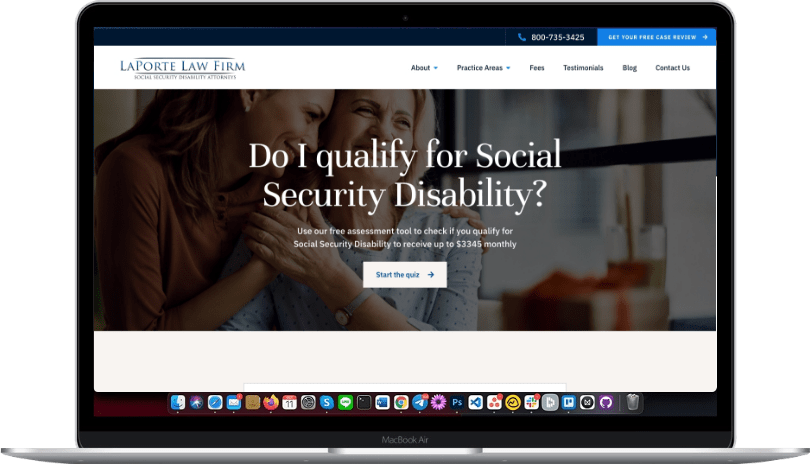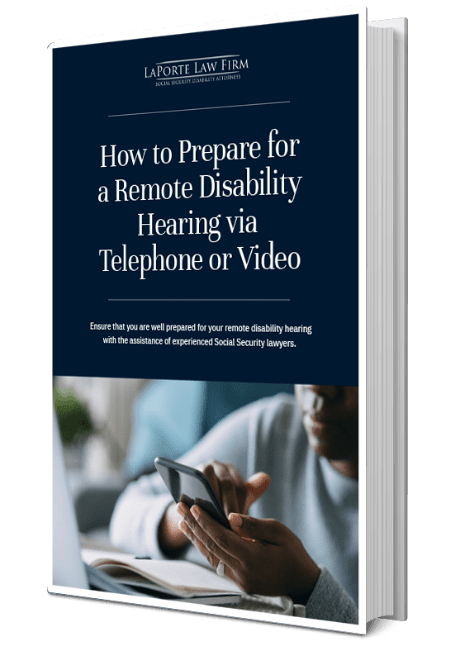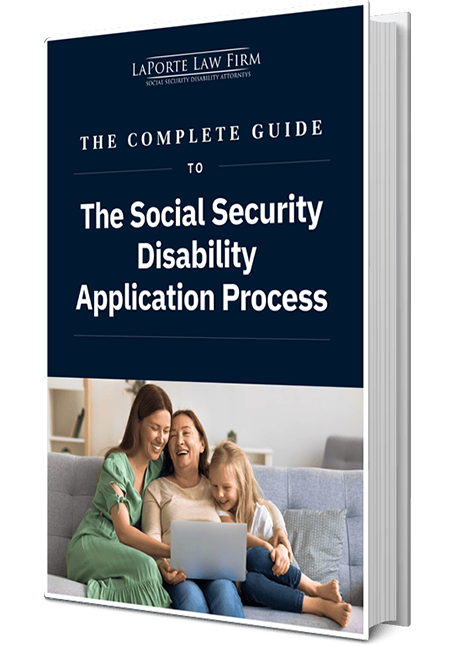
Imagine awaiting a decision that could change your life, knowing that the outcome of your case depends in large part on which judge is randomly assigned.. Social Security disability applicants across the United States face this reality, as approval rates vary widely from judge to judge. These variations are due to the differences in decision-making of administrative law judges (ALJs), who play a critical role in granting or denying claims based on their individual discretion and the unique characteristics of each case.
This disparity in approval rates not only affects the lives of applicants but also points to an underlying complexity in the Social Security disability system. Factors such as ALJ allowance, denial, and dismissal rates, as well as the influence of local resource constraints and the quality of local medical care, may contribute to these differences. The variability of outcomes across states, and even among key cities, highlights inconsistencies that can have significant implications for those seeking disability benefits.
In this article, we delve into a comparison of Social Security disability ALJ approval rates in various US states, analyzing the factors influencing these rates and evaluating the performance of judges. We will also explore how these varying approval rates shape the expectations and strategies of applicants, offering practical insights for navigating this challenging process.
Understanding Social Security Disability Approval Rates
Social Security disability approval rates can be a mystery to many applicants. These rates often vary by specific OHO (Office of Hearings Operations) and reflect how different regions process claims. Currently, California’s approval (allowance) rate is 46%, while Texas approves 41% of cases.This suggests many cases still end in denial.. As you can see, the state and region in which you reside can play a role in the possible outcome of your disability case. This speaks to the fact that the disability program is a complex system and is not like a Scantron test that only has yes or no answers.
The role of administrative law judges
ALJs play a crucial role in deciding Social Security disability claims. They are tasked with examining the full scope of an applicant’s file. This process involves looking over medical records and listening to expert testimonies, including from vocational experts and occasionally medical experts. . They also consider the applicant’s work history and medical documentation, and apply all relevant Social Security regulations to each case in front of them.
After the ALJ has considered all the evidence, they will write a lengthy legal decision, explaining the basis for the fully favorable, partially favorable, or unfavorable decision.
ALJ allowance, denial, and dismissal rates
Analyzing Social Security disability decisions gives insight into approval patterns. In 2023, for example,the average ALJ approval rate nationwide was 44%. However, some states, such as Missouri, had an overall approval rate of 38%, while the state of Hawaii had an approval rate of 55%. Twenty-six percent (26%) of cases in Hawaii were denied, and 19% were dismissed. A dismissal is different from an unfavorable denial decision, because a dismissal does not decide a case based on the merits of the issue of disability. Dismissals occur when the applicant fails to meet procedural requirements, such as missing deadlines, failing to provide requested information, or not appearing for scheduled appointments or hearings.
Factors influencing approval rates
Different factors influence Social Security disability approval rates. Each Social Security case is unique, because the ALJ must consider a claimant’s work history, unique medical condition, and their unique medical records documenting their condition. On the issue of medical records, these play a critical role in the outcomes of disability cases. A disability claimant who lives in an area lacking access to adequate medical care will have a drastically different medical record than a claimant with an identical condition who lives in a an area with extensive medical resources.
Other factors that may impact approval rates include the type of local industry in a region. In the Bay Area, for instance, technology is a major industry, and many of the workers in this industry are working in sedentary occupations. In a more industrial area such as Pittsburg, California, the local industry includes oil refineries and dock workers, who perform much more physically demanding labor that requires a good deal of standing, walking, and lifting.
For those applying for disability benefits who work in more physically demanding occupations, the Social Security regulations for proving disability are slightly less stringent, especially for those over age 50 or 55. Therefore, the regional industry can impact the overall approval and denial rates at local Social Security offices. An ALJ who presides over cases for San Francisco residents may encounter different occupations for disability claimants than an ALJ who presides over cases in Oakland, California.
Factors Leading to Delays
The disability claims process is a lengthy one. As of June 2025, the wait time for a disability hearing in the State of California is averaging 11.8 months from the date of the hearing request. However, each hearing office within the state of California have wait times that may vary.
For example, the San Francisco hearing office is taking 15 months to schedule a hearing from the date of the hearing request. Oakland is taking 11 months to schedule a hearing request. San Jose is averaging 13 months. San Rafael is taking 15 months. The differences in wait times between the local hearing offices can be impacted by many factors, including the number of ALJs working at the hearing office, staffing shortages at the hearing office, the number of people claiming disability in the region assigned to the hearing office, and ALJs assigned to different areas of the country conducting hearings remotely.
Staffing issues and resource constraints
The Social Security Administration (SSA) is dealing with significant staffing issues. In 2025, the SSA announced plans to cut 7,000 employees, shrinking the number of SSA employees down to 50,000 from 57,000. It is too early to tell how exactly this will impact the processing times at the hearing level, since ALJs and their staff at hearing offices have cut down on their backlog significantly in the past five years. However, Social Security has already reported issues with a backlog of Social Security claims for retirement (these are processed by the local Social Security field offices, not by the ALJs at Office of Hearings Operations).
How initial applications and reconsiderations impact hearing wait times
Many initial disability applications are denied, often requiring the applicant to appeal. The wait times at the request for reconsideration stage have gone up significantly in recent years. When there is a backlog at the reconsideration stage, delays at the local hearing offices may result. This is because they may temporarily cut through the back log at the hearing stage, as they have fewer cases to process due to the delays at the lower levels.
Then, when the disability adjudicators work their way through the backlog at the reconsideration stage, the increased caseload at the hearing stage causes longer wait times for people waiting for their hearing.
Court procedures causing judicial decision delays
Delays are also seen in the decisions made by higher courts. When an ALJ decision is brought to the Appeals Council and subsequently to federal district courts, this can lead to remand decisions.
Remands occur when the Appeals Council or a federal district court judge decides to overturn an unfavorable ALJ decision or a dismissal decision. When this occurs, the local hearing office must then schedule a new hearing and process the case anew.
A remanded case then counts as an “aged” case that receives priority with scheduling, since the disability claimant with a remanded decision requested their original hearing many months, or even years, prior to the average disability claimant pending for their first ALJ hearing. When ALJs receive an increased rate of remand, this increases their caseloads, which can increase wait times.
Navigating the SSDI Process
Applying for Social Security Disability Insurance (SSDI) can be a challenging journey. Initial approval rates stand at about 35%, while the reconsideration appeal sees only around 10% getting approved. This makes persistence vital.
An important part of this process is the role of administrative law judges, whose approval rates can vary greatly but generally are higher than the approval rates at the initial and reconsideration stage. While the outcome of a disability case is often impacted by the assigned ALJ, Social Security ALJs are professional, trained attorneys who take their powerful role seriously, and apply the same rules and regulations across all US states and territories.
Because you cannot control which ALJ is assigned to your case absent extremely limited circumstances, it is often better to focus on your medical care and your health, and to meet all the applicable Social Security deadlines. That way, when your case is finally assigned to an ALJ and you appear at your disability hearing, your file is up to date and accurately and thoroughly reflects your disability.
Seeking legal assistance for better outcomes
Engaging a disability lawyer during the SSDI application process can vastly improve your chances of success. Attorneys play a key role by not only filling out applications but also gathering crucial medical documents for submission. Legal guidance helps reduce stress by navigating complex procedures with expertise. Government studies have shown that claimants with legal representation have a nearly threefold higher chance of securing benefits compared to those without. This makes obtaining legal aid not just beneficial but also a smart move in pursuing disability benefits.
For a stronger SSDI claim, contact LaPorte Law Firm today. Our lawyers specialize in disability law and are dedicated to guiding you through every step of the application or appeals process, significantly improving your chances of securing the benefits you deserve.
FAQs
Approval rates can be influenced by the judge’s experience, interpretation of disability law, and case volume; the medical evidence quality; the quality and accessibility of medical treatment within the judge’s local jurisdiction; the characteristics of the workforce and industry within the judge’s local jurisdiction; and staffing and workloads at the hearing offices and other branches of the Social Security Administration.
Rates vary widely — some judges approve over 70% of cases, while others approve less than 30%, depending on individual judgment style and workload.
It can offer insight, but it’s not definitive. Each case is unique, and strong medical evidence and legal representation still matter most. Even the strictest judges approve cases, especially when all the medical evidence supports a finding of disability.
Yes. Websites like DisabilityJudges.com and the SSA’s public hearing office reports provide judge-specific approval statistics.















